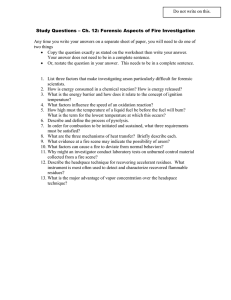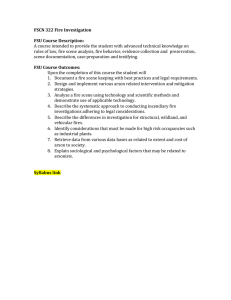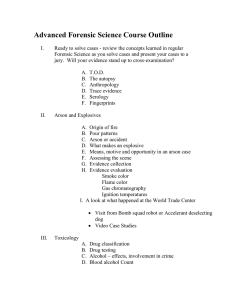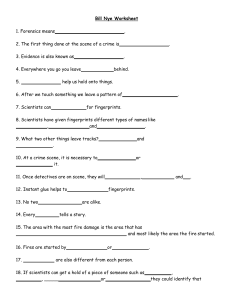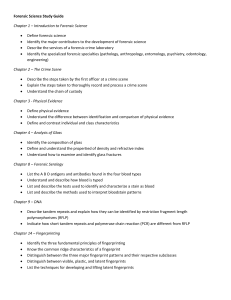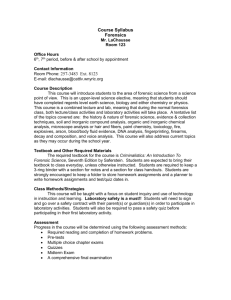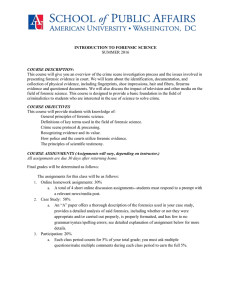Forensic Science Study Guide
advertisement
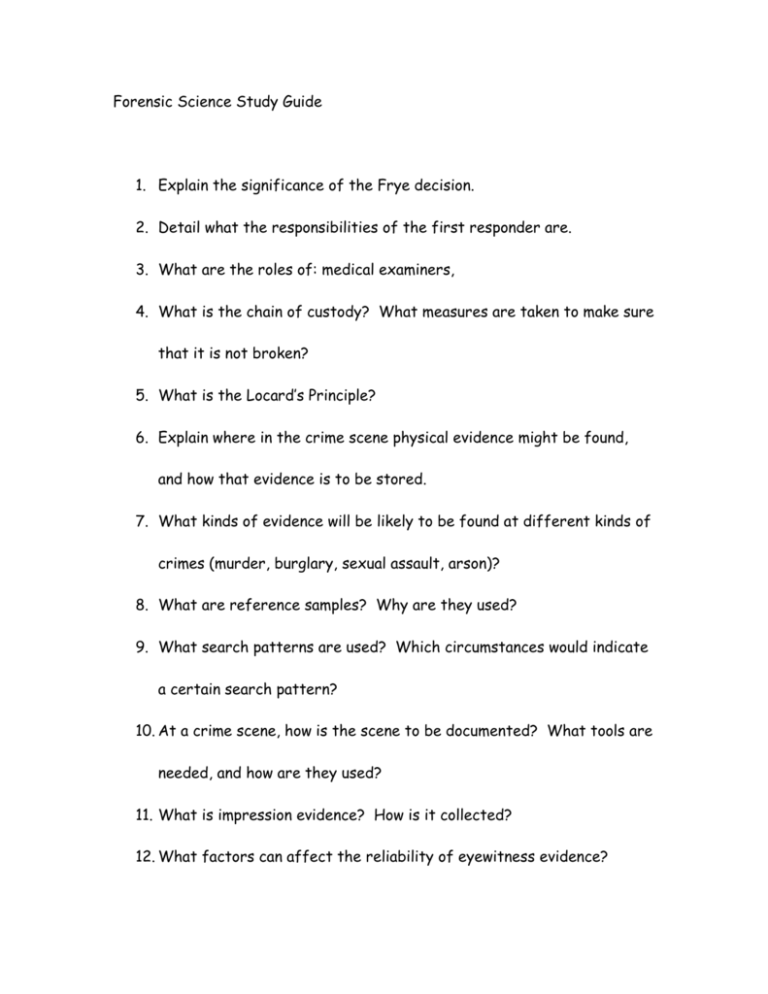
Forensic Science Study Guide 1. Explain the significance of the Frye decision. 2. Detail what the responsibilities of the first responder are. 3. What are the roles of: medical examiners, 4. What is the chain of custody? What measures are taken to make sure that it is not broken? 5. What is the Locard’s Principle? 6. Explain where in the crime scene physical evidence might be found, and how that evidence is to be stored. 7. What kinds of evidence will be likely to be found at different kinds of crimes (murder, burglary, sexual assault, arson)? 8. What are reference samples? Why are they used? 9. What search patterns are used? Which circumstances would indicate a certain search pattern? 10. At a crime scene, how is the scene to be documented? What tools are needed, and how are they used? 11. What is impression evidence? How is it collected? 12. What factors can affect the reliability of eyewitness evidence? 13. Compare individual vs. class evidence, and explain how it relates to identification of a suspect. 14. Know the important individuals in forensic history: Orfila, Bertillion, Sir Alan Jeffreys, 15. Know the major databases – fingerprints, DNA, criminal records, etc. 16. Firearms – know bullet types, compositions, and how gunshot residue can be tested for. Terms for firearms: grooves and lands, comparison microscope, rifling 17. Know the patterns that blood emissions make, and the typical appearance of spatters under different conditions. 18. Fingerprints – characteristics, points of comparison (and how many are needed). 19. Know the terminology of arson investigations: flash points, accelerant, 20. Distinguish between comparison of DNA evidence – what tests can be used, which evidence they are best suited for.
